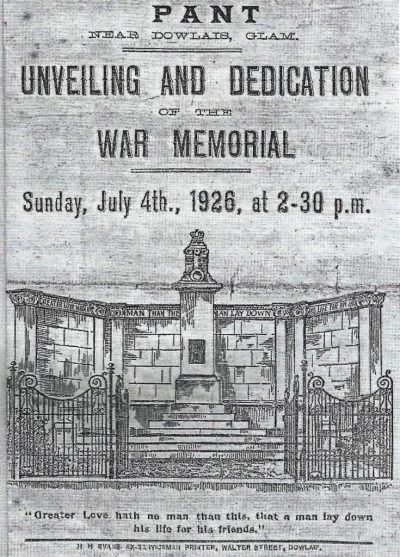By J Ann Lewis
 David Davies was born in July 1857, the youngest of ten children.
David Davies was born in July 1857, the youngest of ten children.
His father died when David was just seven years of age, and at the age of ten, he began working at a candle factory at Caedraw. When the factory closed, David returned to school for a short time before gaining employment at another candle factory in Victoria Street. When he was 18 he began working at the Plymouth Works Rolling Mills, and after their closure, he found employment at the Ifor Works Rolling Mills.
In 1878 he became a conductor on the London and Northwest Railway omnibuses which connected the train passengers with the Brecon and Merthyr Railway at Dowlais Central Station. When the Morlais Tunnel opened in June 1879, the buses were no longer required, so he became a porter and later signalman. He married Mary in 1881 and moved to Pant, and the couple had six children – Annie, Albert, William, Arthur, Frank and Bryn, Albert losing his life in the First World War.
A man deeply involved in local politics, fighting for an improved living standard for others, he organised a large demonstration at Cyfarthfa Park, asking for 2,000 new houses to be built. He was also a J.P., served on the Board of Guardians for nine years, was one of the founders of the Dowlais Co-operative Society (later becoming its chairman), and he was also a founder member of the Dowlais Railwaymen’s Coal Club, which had its own wagons, and by cutting out the middle-man, saved the profits for its members.
In 1919, he was the official candidate (Dowlais Ward) for the Merthyr Trades Council and Labour Party. Points of his campaign were:-
- Free medical and nursing care for infants.
- Clean, plentiful, cheap milk; managed by the people for the people and thus eliminating private profit.
- Free meals for hungry children.
- Free medical treatment for the needy and sick.
He was elected mayor in 1925-26.
David died in 1940, his principal aim in life having been to leave the town of his birth a better place than he found it.

 Nelson Price was born on 22 May 1892 near Bethesda, North Wales, and when he was quite young, his family moved to Dowlais, settling in Broad Street. Within a few years however, his father died, leaving a widow and eight children.
Nelson Price was born on 22 May 1892 near Bethesda, North Wales, and when he was quite young, his family moved to Dowlais, settling in Broad Street. Within a few years however, his father died, leaving a widow and eight children.














